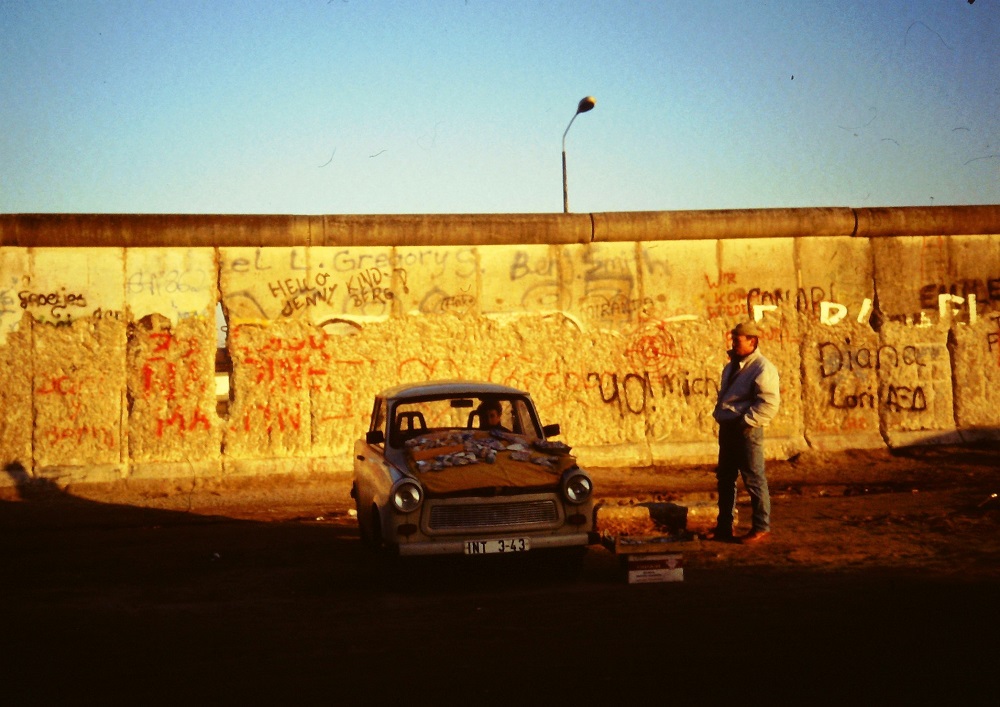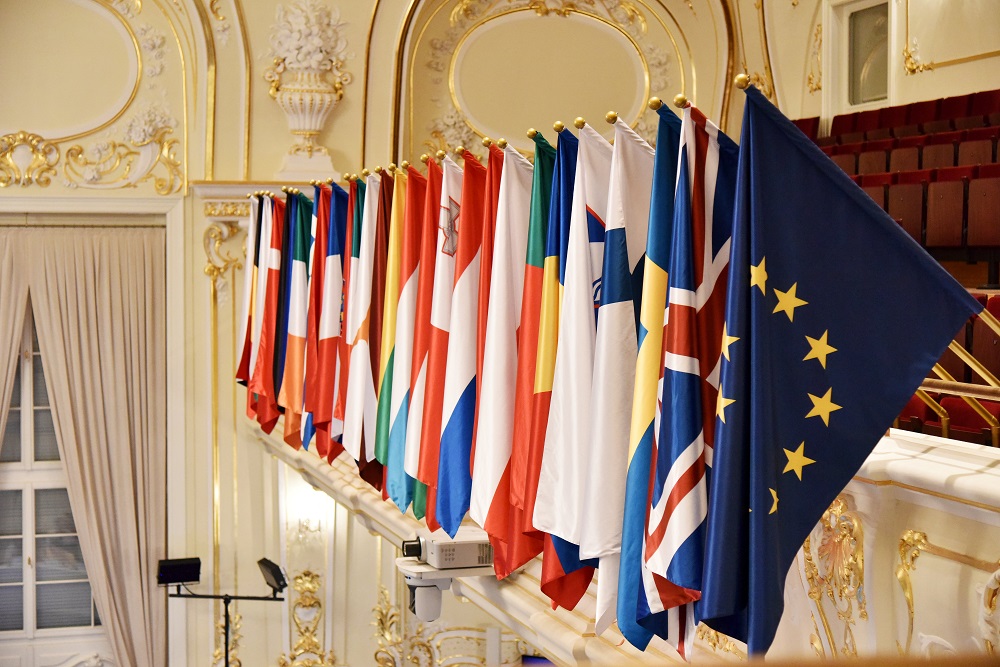This year will be 36 years since the fall of the Berlin Wall!
The fall of the Berlin Wall is one of those historical events that doesn’t feel that far away, even though it happened 36 years ago. This incident, which occurred on November 9, 1989, brought about significant political and economic transformation.
The Berlin Wall divided a city and its people, serving as a powerful symbol of the ideological divide during the Cold War. Not only did its fall signal the end of the Cold War, but it also caused political and cultural upheavals throughout Europe. On November 9, 1989, individuals on the west side of Berlin peered through holes in the wall to see what was happening, when suddenly they heard sounds coming from beyond. Bulldozers were removing the concrete barrier.
Everyone was taken aback by its fall, and numerous documentaries show how even the citizens used hammers and chisels to break it. Watching the documentaries gave me chills because it was so unbelievable: a piece of history was on the verge of collapsing. Berliners will no longer be isolated from their fellow citizens. Everyone was celebrating, and it was happening.

Brief history of the Berlin Wall
Before going deep into the topic of the fall of the Berlin Wall, I also want to pinpoint a couple of historical details about it: how it was built, why, and how its fall “affected” Germany and the entire world.
The Berlin Wall, which was built in 1961, became the most glaring representation of the Cold War’s separation of the democratic West from the communist East. With Berlin straddling both, Germany split into two distinct nations: the Allied-influenced West and the Soviet Union-influenced East. It was built to prevent East Germans from emigrating to the West, and around 100 people were shot as they tried to cross the wall.
By 1945, the Soviet Union and the United States had started to establish themselves as ideologically opposed “superpowers,” each seeking to influence the post-war world. Politics during the Cold War centered on Germany, and as the East-West divide deepened, so did Germany’s division.
In 1949, Germany was divided into two nations: the Federal Republic of Germany and the German Democratic Republic. And the wall of Berlin between them was not just one wall but two, measuring 96 miles and 13 feet tall.
The fall of the Iron Curtain
It began like any other day, and people were curious to see what was happening. And finally, the East German authorities opened the border crossing point between East and West Berlin. After some initial confusion, the border guards were actually allowing people to cross when the masses of citizens gathered at the border at around 9:00 p.m.
Given how easily the guards could have opened fire on the crowd, this was an important event in the two sides’ history. Harald Jager, the commander of the Bornholmer Strasse border crossing, opened the checkpoints at 11:00 p.m., allowing individuals to cross without having their identities verified.
On November 9, citizens from both East and West celebrated the fall of the Berlin Wall. People were hugging each other, drinking champagne, and singing in the street. They were finally free, able to visit their relatives from the outside of the wall without any restriction
It fell on November 9, 1989, and cleared the path for the liberation of Central and Eastern European nations that had been a part of the Warsaw Pact defense alliance with the Soviet Union, as well as the reunification of Germany on October 3, 1990.
The Berlin Wall was chipped away by souvenir seekers, known as “wall peckers,” over the following two years.
There was a victory for America, too
While Europe experienced the changes more vividly, it is important to remember what I stated at the beginning of the article: the fall of the Berlin Wall had “consequences” for the entire world. The collapse of the Berlin Wall represented an important win for the US in the Cold War’s ideological conflict. The East-West conflict had long been portrayed by American leaders, particularly President Ronald Reagan, as a fight between oppression and freedom.
Many Americans believed that decades of American foreign policy, military spending, and diplomatic pressure had been validated when the Wall fell in 1989. It was celebrated as a victory of democracy, capitalism, and American leadership on the international scene, in addition to being Germany’s liberation.
1990: Reunification of Germany
The Treaty Establishing a Monetary, Economic, and Social Union between the Federal Republic of Germany (FRG) and the German Democratic Republic (GDR) came into effect on July 1, 1990. East Germany would soon join the European Economic Community and adopt the West German Mark. On 3rd October 1990, we can say that Germany was finally reunited.
Germany spent somewhere around 1.3 trillion euros to upgrade the East’s infrastructure and reform its institutions. While from the political point of view things were going in the right direction, from the social point of view, the cultural gap between the West and the East was pretty hard to fill, and some say they’re feeling it in today’s world as well.
Europe redraws its borders
In December 1991, history was finally closing a rough chapter: the Soviet Union. The Russian Federation was the largest of the fifteen independent republics that emerged from the dissolution of the Soviet Union. The division of Czechoslovakia into the Czech Republic and Slovakia occurred on January 1, 1993.
Boris Yeltsin was the first democratically elected president of the newly formed Russian Federation after the Soviet Union broke up. He immediately began enacting market-oriented reforms, such as removing trade restrictions, removing price controls, and cutting back on government subsidies.
Millions of regular Russians’ savings were wiped out, and poverty rates skyrocketed as a result of this type of shock therapy, which set off a period of severe inflation.
Germany’s rise
While everybody was happy their country was over this and on its way to being united again, a lot of Western leaders opposed this. For example, Thatcher, the British prime minister, opposed German reunification after the collapse of the Berlin Wall, saying it might become too powerful.
Germany became the continent’s undeniable economic powerhouse after a manufacturing boom and extensive labor market reforms quickly offset the slow growth caused by the costs of reunification.

The European Union was formed in 1993
The drive for greater European integration, which had started in earnest following World War II with the establishment of the European Coal and Steel Community in 1951 and the European Economic Community in 1958, was accelerated by the fall of the Berlin Wall and the Soviet Union. The Maastricht Treaty of 1992 officially created the EU.
Later on in 2007, the Lisbon Treaty established the current structure of the EU, while Maastricht established a framework for a common currency and defense, and security policy.
Freedom of movement
With a whole Germany, many citizens began to travel more, new people came to Germany for working opportunities, and soon after the EU expansion, citizens of the state members gained the right to work and live freely across Europe.
In pursuit of better employment opportunities, millions of Eastern Europeans migrated westward. For instance, after 2004, the Polish diaspora in the UK expanded quickly. Both the host nation and the migrants benefited economically from this, but it also generated political discussions about cultural change, job competition, and integration.
What I wrote in the article is just a small part of what happened during the fall of the Berlin Wall, so if you’re keen on reading more about this topic, I warmly recommend to you one of the books I used in my research, The Fall of the Berlin Wall (Turning Points in History, 20), written by William F. Buckley Jr.
William F. Buckley Jr. gives a compelling story of the events leading up to the wall’s destruction and the end of the Cold War, as well as a detailed explanation of the wall’s construction and its devastating effects on people’s lives on both sides.
Bottom line:
People watched with tears in their eyes how, once a divided city, now a community that had the same goals, began to heal, while a new generation—then and now—has been left to explore the lasting effects. Footage from the fall of the Berlin Wall can be watched everywhere, including on YouTube for free. All these are full of emotion that even after so many years feel so alive in our memory. This event marked a significant turning point in global history; the world began to change for the better, and in that moment, everyone saw hope on the horizon.
Sadly, the political and security landscape appears grim 36 years after the fall of the Iron Curtain and the Berlin Wall. Democracy has been destroyed in many nations and areas since the turn of the twenty-first century (Gorokhovskaia and Grothe, 2024).
Various forms of populist challenges can arise in even the most developed Western democracies. Not to mention how the conflict between Russia and Ukraine has shaken Europe pretty badly. There is an uncertainty that lingers in the air, and sadly, we don’t know when and how we will be in the future.
How do you feel about the global situation now, 36 years after the fall of the Berlin Wall? How do you see the American nation in this moment? I am waiting to read your opinions in the comments section below.
You may also want to read about The Great Depression: Causes, Impact, and Recovery.
